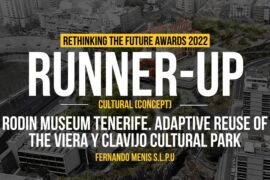The Mojokerto Cottage is a conceptual vision to revitalize Eastern Java traditions in interior design form. Taking certain cultures and traditions native to the Mojokerto area that it located Southwest of East Java’s capital Surabaya and developing them into applicable interior elements.
Designer: Karima Nadhifa Roosheroe
Location: Indonesia (beachside)
Status: Concept
Cultures and Traditions

Indonesia is known for its vast amount of cultures, languages, people, and tradition, in which lies a reoccurring conversation to sustain it all despite the ever-growing technological era. With youths migrating to a more global approach, cultures are struggling to remain alive and existent by trying to gain more interest through multiple public-owned and private-owned programs such as Indocraft, an exhibition showcasing Indonesian batik and craftsmanship in an international scale.
This project aims to help cultures by implementing them in a form of art that is able to be experienced first-hand through a day-to-day living concept. Such as which, a cottage is chosen to also accommodate the growing demand of Indonesian tourism.
Mojokerto, located in East Java, is one of the few areas that struggle with lack of cultural-interest from local youths. Situated near Surabaya, Indonesia’s port city as well as East java’s capital, said youths choose to migrate from Mojokerto hoping to live the metro life whilst looking for a better occupation and pay. Fewer youths to pass on Mojokerto’s legacy means a culture threatened of being extinct in the coming years; therefore, Mojokerto is the chosen area to be implemented in this project.
Developing Mojokerto’s Cultures and Traditions

One of the specific culture that is chosen from Mojokerto is the art of Bantengan. Bantengan folk art originated from the District of Pacet, precisely in the village of Made. This attraction is played by two people, one person in front plays the head and at the same time as the front feet and 1 person behind as a hip as well as the back foot. The movement on this attraction depicts the movement and attitude of a bull while fighting. The attraction is displayed with folk music.
The concept of Bantengan is implemented into a furniture made specifically for the cottage. The relief on the bull’s back that is created from the performers’ silhouette is transformed into tiers to shelve items, while the concept of the performers being puppeteers is implemented into the structure of the furniture, which is metal that is designed to look like a frame or ‘skeleton’.
The Cottage Design

The cottage is designed while keeping in mind that the building is facing north and will have access to the beach through the south, hence the concept of an open-plan cottage. Large glass doors south side of the cottage provides enough opening to keep the temperature of the cottage regulated while providing a view of the beach at any given time comfortably.
Different floor levels and the use of a partition made of brass Batik stamps create a clear division between each areas of the cottage. Concrete flooring is used for the main area to keep the cottage cool without the use of an air conditioner. Terracotta style tiles decorate the bathroom floor as well as natural stones for the shower area to give the atmosphere of having a natural and outdoor shower. The deck area uses pale colored planks of wood to give a cooling effect to the eye while also being in the same color family as the concrete flooring inside the cottage.
Cottage Visualization

A miniature of the bedroom area of the cottage. Behind the brass partition is the common area, while beyond the French doors is the deck.

Karima Nadhifa Roosheroe
Karima Nadhifa Roosheroe is a student studying for her Bachelor of Interior Design degree in Institut Teknologi Sepuluh Nopember (ITS) located in Surabaya, Indonesia. Passionate about sustainable and eco design as well as traditional patterns and design influenced by a variety of cultures. Her particular interest is in Indonesia and Japanese culture. She applied most of the ancient, old elegance image she captured during her travelled around Indonesia and Japan on her design. Her ongoing project is to bring more traditional Indonesia batik with the colorful, general and elegance pattern into her design.





